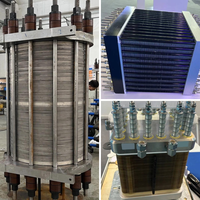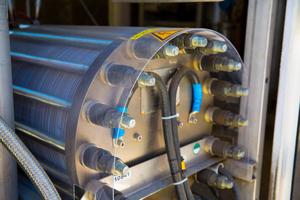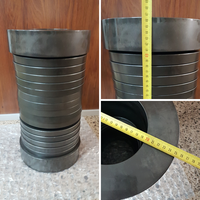
Disc springs, also known as spring washers and Belleville washers, are essential for maintaining the integrity and functionality of sealing in electrolyzers and fuel cells. In the electrolyzers, which produce hydrogen and oxygen from water and electricity, and in fuel cells, which generate electricity from hydrogen and oxygen; These springs play a crucial role in guaranteeing a constant sealing between the cells in different working conditions, which is essential for both systems to operate continuously.
Applications in electrolyzers and fuel cells
 Belleville springs are used in many industrial applications where tightness is required, having demonstrated their efficiency in the past in flanged vessels and pipes exposed to temperature changes, as is the case with their use in refineries around the world. Taking advantage of this experience, today they are a key element for electrolyzers and fuel cells due to their simplicity and possibilities of achieving any level of force and displacement thanks to the different dimensional and stacking options available. It should also be noted that they are elements that can be manufactured in materials other than traditional spring steel, such as stainless steel or nickel alloys if necessary.
Belleville springs are used in many industrial applications where tightness is required, having demonstrated their efficiency in the past in flanged vessels and pipes exposed to temperature changes, as is the case with their use in refineries around the world. Taking advantage of this experience, today they are a key element for electrolyzers and fuel cells due to their simplicity and possibilities of achieving any level of force and displacement thanks to the different dimensional and stacking options available. It should also be noted that they are elements that can be manufactured in materials other than traditional spring steel, such as stainless steel or nickel alloys if necessary.
As we just implied in the paragraph above, the same elastic properties that make saucer springs ideal for electrolyzers also make them essential for tightness in fuel cells. These batteries convert chemical energy into electrical energy and require a perfect seal to prevent the leakage of hydrogen and oxygen. Likewise, electrolyzers require effective sealing to maintain the efficiency of the hydrogen production process. The ability of these springs to handle changes in pressure and temperature ensures constant and reliable performance, improving efficiency and reducing system maintenance costs.
Real case of disc springs in electrolyzers
In the images below, we share information from a recent project in which a major European company was supplied with several disc spring assemblies in special dimensions and material for a large-scale electrolyzer. This project required a force of 480 tons, resulting in springs of 236x142x24.3 mm (External Diameter – Internal Diameter and thickness) and a stacking height of 340 mm. This stack consisted of 3 sets in series for 5 units in parallel each. This type of application shows that our springs are not limited to small solutions, but also to large applications, ensuring tightness even under extreme conditions.
Advantages of disc springs

As we already mentioned, disc springs are especially useful in applications where it is necessary to achieve very good tightness in flanged containers. Specific advantages include:
-
High capacity to absorb thermal and pressure changes: They tend to maintain a contact pressure of the different components as constant as possible, ensuring the initial tightness of the assembly.
-
Resistance to high forces: Ideal for demanding industrial applications, both large scale and smaller.
-
Uniform load distribution: Reduces wear and extends the life of the joints.
Conclusion
Disc springs for electrolyzers and fuel cells are a reliable solution to ensure the tightness of these types of applications. If you are looking to improve the efficiency and durability of your equipment, be sure to consider its implementation and do not hesitate to contact us in case of doubts. For more information, visit our page disc springs.

¿Qué opinas sobre este tema?